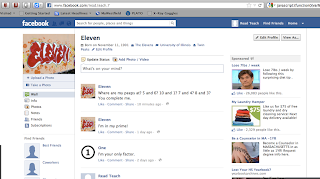This was not intentional. We used Wikispaces to organize or conference. Maybe providing the model lead to many teachers using this as their platform for connected learning. I like more robust solutions such as Canvas, Google Sites, or Wordpress but I understand the comfort teachers have and the control they get with Wikispaces.
Building your Online Space.
At the same time I also joined the personal learning seminar yesterday as part of the Connected Educators Month. It was hosted by Barbara Bray, Darren Cambridge, Mimi Ito, Steve Nordmark, and Sylvia Martinez.
They asked the audience, where teachers should start. I argued, after seeing the work teachers have done at #MNLI12, that you have to start by building an online space for you classroom.
So in the end it doesn't matter what tool you use just get your class online. When you open your classroom up to an online space you:
- Provide voice to the disenfranchised.
- Open up opportunities to assess process over product.
- Model the creation of a digital footprint
- Create opportunities for reflective learning and teaching.
I am amazed, and slightly disappointed, that so many of the participating districts still do not have a district wide solution for a CMS or a LMS.
Kevin Leander and Michelle Knobel have long argued that new literacies involve new spaces and new stuff for learning. I am so happy to see that many teachers built an online space as an extension of their classroom. Maybe their districts will respond:
gmsevaluatesources.wikispaces.com
casegrade5.wikispaces.com
readingcompweb20.wikispaces.com
plcww.wikispaces.com
bpmsipadbasics.wikispaces.com
projectmocktrial.wikispaces.com
loyaltymatters.wikispaces.com
.jpeg)




